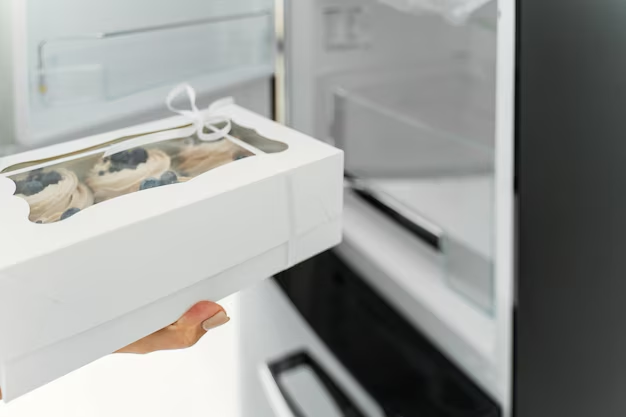How Long Can Chitterlings Be Stored in the Refrigerator?
Chitterlings, often simply referred to as "chitlins," are a traditional dish enjoyed by many, especially in Southern cooking. Made from the small intestines of pigs, chitterlings offer a unique flavor and texture, making them a cherished delicacy. However, like all perishable foods, they have a limited shelf life. So, how long can chitterlings last in your refrigerator? Let's delve into this topic comprehensively.
🌟 The Basics of Chitterling Storage
Before diving into how long chitterlings can last, it's crucial to understand proper storage practices. Proper storage is the key to preserving freshness and ensuring safety:
- Cleaning: Before refrigerating chitterlings, they should be cleaned thoroughly. This involves removing any fat or unwanted particles. Proper cleaning minimizes the risk of foodborne illnesses.
- Packaging: Store them in airtight containers or well-sealed plastic bags to prevent contamination and odors from affecting other foods in your refrigerator.
- Temperature: Keep your refrigerator at or below 40°F (4°C) to inhibit bacterial growth.
🕒 Shelf Life of Chitterlings
Refrigerated Chitterlings: If you've stored them correctly in the refrigerator, raw chitterlings typically last 2 to 3 days before they begin to spoil.
Cooked Chitterlings: Once cooked, they can stay in the refrigerator for 3 to 4 days. Ensure they are properly cooled down and placed in airtight containers to extend their shelf life.
📋 Essential Tips for Chitterling Storage
Taking a few extra steps can help preserve chitterlings' freshness and safety:
- Date Labeling: Always mark containers with the date of storage. This simple practice makes it easier to track freshness.
- Avoid Cross-Contamination: Store chitterlings away from other foods to prevent cross-contamination, which can cause spoilage or foodborne illnesses.
- Regular Checkups: Regularly inspect stored chitterlings for any signs of spoilage, such as off-putting odors or slime.
👀 Signs of Spoilage
Knowing when chitterlings are no longer safe to eat is just as important as knowing how to store them. Here are some red flags:
- Smell: A foul or sour odor is a clear indicator that chitterlings have spoiled.
- Appearance: Look for signs of slime or discoloration.
- Texture: A slimy or sticky texture can signal spoilage.
If you notice any of these signs, it is safest to discard the chitterlings.
🍲 Cooking Chitterlings for Extended Use
Cooking chitterlings can extend their life beyond refrigeration. Here’s how:
- Freezing: Cooked chitterlings can be frozen for up to 2 to 3 months. Store them in freezer-safe bags or containers with airtight seals.
- Reheating: When ready to enjoy, thaw in the refrigerator and reheat thoroughly before serving.
🎯 Summary of Chitterling Storage Tips
Here's a quick reference guide to help you store chitterlings effectively:
📝 Quick Tips:
- Clean: Always clean before storage.
- Refrigerate: Keep at or below 40°F.
- Airtight Packaging: Use airtight containers or bags.
- Cooked Storage: Consume cooked chitterlings within 3-4 days.
- Freeze: Extend life by freezing cooked chitterlings.
- Inspect: Regularly check for spoilage signs.
🌊 Exploring Related Topics
To fully understand the nuances of storing chitterlings, it's helpful to explore related food storage topics:
❄️ Freezing and Thawing: Best Practices
Freezing is a great way to preserve chitterlings beyond the immediate shelf life provided by refrigeration. Understanding how to properly freeze and thaw foods can ensure quality retention.
- Freeze Quickly: Slow freezing can compromise texture and flavor.
- Thaw Safely: Always thaw in the refrigerator to keep the product out of the danger temperature zone (40°F - 140°F).
🥶 Other Offal Storage Tips
Chitterlings are just one type of offal, a category that includes liver, kidneys, and hearts. Here are some universal tips:
- Short Shelf Life: Like chitterlings, offals generally have a shorter shelf life, necessitating keen attention to storage practices.
- Quick Use: Use or freeze quickly after purchase.
Beyond the Refrigerator: Alternative Storage Methods
While the refrigerator is the most accessible and common choice for storing fresh and cooked chitterlings, exploring the utility of other preservation methods can be beneficial.
🍋 Curing and Pickling
Though less common in modern kitchens, curing or pickling chitterlings can extend shelf life substantially:
- Curing: Uses salt to draw out moisture, which inhibits bacterial growth.
- Pickling: Employs vinegar or brine solutions to preserve and add a unique flavor.
Pressure Canning
For those with the right equipment, pressure canning is another option:
- Safety First: This method requires precise temperature control to ensure safety.
- Prolonged Shelf Life: Often extends shelf life significantly when processed correctly.
Ending on a Practical Note
Considering regional and traditional cooking methods, some may choose variations in how they handle and prepare chitterlings. Whether preserving traditionally via curing or using freezing for modern convenience, your choice will depend on time, equipment, and taste preferences.
By focusing on proper storage practices, regularly inspecting for spoilage, and employing alternative preservation methods, you can enjoy fresh and safe chitterlings while minimizing waste and maximizing flavor.
In essence, how long chitterlings last in the refrigerator depends on several factors, including storage methods, cleanliness, and your vigilance in checking for spoilage. With these guidelines, you're well-equipped to enjoy this traditional delicacy safely and deliciously.
